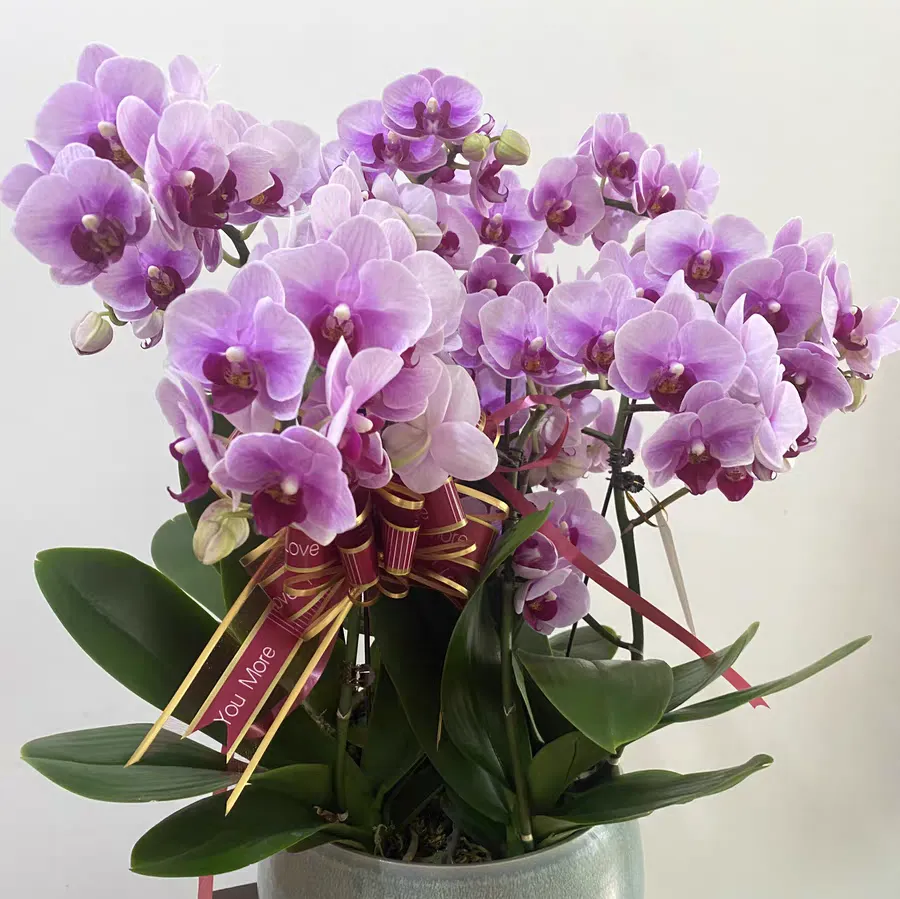As the midsummer arrives and temperatures continue to rise to 40°C, Phalaenopsis orchids, as tropical epiphytic plants, prefer warm and humid environments but cannot tolerate high temperatures and strong light. Improper management can easily lead to problems such as leaf scorching, root rot, and growth stagnation.
### I. Sunshade Protection
Phalaenopsis orchids thrive in diffused light. Direct强光 (strong light) can cause chlorophyll decomposition in leaves, stomatal closure, and sunscald. Specific protective measures are as follows:
1. Move the plant to an east-facing or north-facing windowsill, or place it more than 2 meters away from south-facing windows to avoid direct sunlight. If placing it on a balcony, choose the inner area.
2. Use a sunshade net with a 50%-70% shading rate to effectively filter strong light; install sheer curtains or shutters indoors to control light intensity by adjusting angles. Regularly clean sunshade facilities to ensure uniform light transmission.
3. Avoid the strong light period from 10:00 to 16:00. The soft light in the early morning and late evening is more suitable for growth, allowing brief exposure to oblique light.
### II. Cooling and Humidity Enhancement
The optimal growth temperature for Phalaenopsis is 18-28°C. When the ambient temperature continuously exceeds 32°C, the plant's respiration intensifies, nutrient consumption exceeds accumulation, and high temperatures easily trigger root physiological disorders. Cooling measures include:
1. Use a fine mist sprayer to mist the space around the plant before 9:00 and after 16:00 daily, dissipating heat through water evaporation. Avoid water droplets lingering on leaves to prevent high-temperature burns or fungal infections.
2. Place a tray under the flower pot, add clear water, and line it with ceramsite or pebbles to keep the pot bottom isolated from the water surface, using water vapor evaporation for cooling; if placing the plant in an air-conditioned room, maintain a distance of over 1 meter from the air outlet to prevent temperature difference damage from direct cold air.
3. Dry summer air easily causes leaf water loss. Maintain environmental humidity at 60%-80% by using humidifiers, wet curtains, or placing water containers around the plant.
### III. Precise Water Control
High summer temperatures accelerate water evaporation, but the fleshy roots of Phalaenopsis are extremely sensitive to waterlogging. Follow the principle of "small amounts, multiple times, and watering when dry":
1. Judgment criteria: Observe the medium color (moss turning white), touch the medium humidity, or insert a bamboo stick. Water only when the surface 2-3 cm of the medium is dry.
2. Watering method: Use the bottom-soaking method or slowly pour along the pot edge to avoid water flow impacting the roots. Use tap water aged for 24 hours at room temperature, with a temperature difference from the ambient temperature not exceeding 3°C.
3. Special treatment: For plants with developed aerial roots, replenish water to the aerial roots with a sprayer in the morning and evening to promote nutrient absorption; suspend watering and enhance ventilation during continuous rainy weather.
### IV. Fertilization Suspension
Under high summer temperatures, Phalaenopsis growth metabolism slows, and its fertilizer absorption capacity significantly decreases. Excessive fertilization at this time can easily lead to salt accumulation and "root burning". Specific management measures:
1. When the ambient temperature continuously exceeds 30°C, completely stop root fertilization and suspend foliar fertilizers.
2. Nutrient reserve: Apply a balanced water-soluble fertilizer diluted 2000 times once in early summer to supplement basic nutrients. Resume normal fertilization frequency after the temperature drops below 28°C in September.
### V. Ventilation and Disease Prevention
High-temperature and high-humidity environments create conditions for the breeding of fungi, bacteria, and pests. Strengthening ventilation is key to preventing diseases and pests:
1. Place the plant in a well-ventilated location, such as near a window or balcony, and open windows for ventilation for at least 3 hours daily. Use a fan on low speed to promote air circulation when cultivating indoors, but avoid direct strong winds.
2. Regularly inspect leaves and roots. If diseases such as anthracnose or soft rot are found, promptly spray fungicides like thiophanate-methyl or chlorothalonil; for pests such as spider mites or scale insects, use physical pest control or low-toxicity pesticides.
3. Timely remove withered leaves and flowers to keep the cultivation environment clean; sterilize the medium at high temperature when replacing it to avoid carrying pathogens.
### VI. Special Cases
1. Flowering period management: Pay extra attention to Phalaenopsis blooming in summer to avoid premature flower aging due to high temperatures. Extend the flowering period by reducing the ambient temperature and light intensity.
2. Newly purchased plants: Newly purchased Phalaenopsis in summer need a 1-2 week acclimation period. Avoid repotting immediately, and wait for the plant to adapt to the environment before operating.
How to Deal with Phalaenopsis Orchids in 40℃ High Temperature

Share with
Tagged in :




Leave a Reply